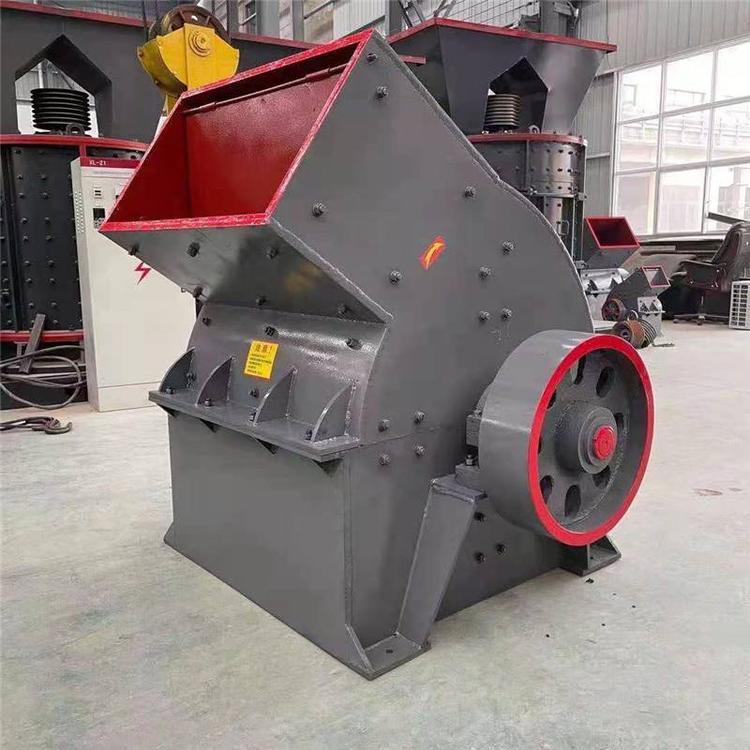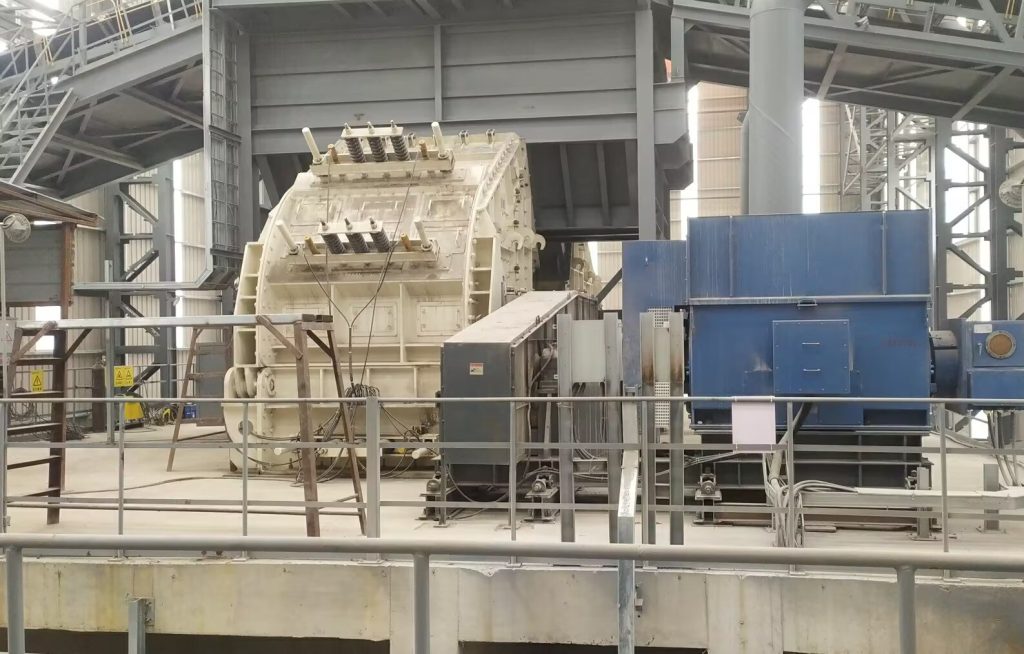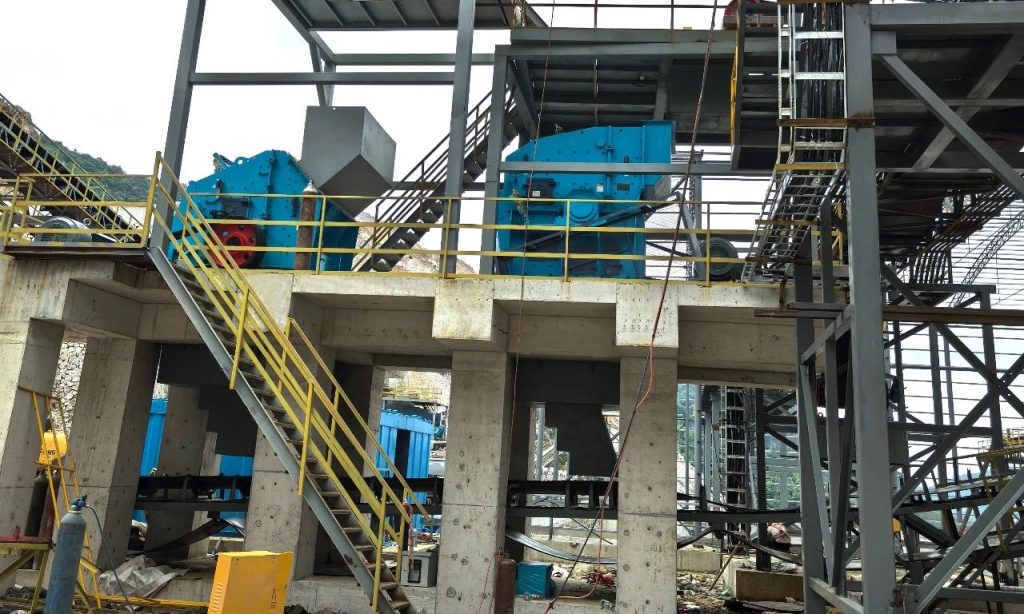
400Kw Metallurgy Feeding 460mm Cone Crusher Machine
2025-9-5
While both hammer crushers and impact crushers use impact force to crush materials, they differ significantly in structure, operating principle, applicable materials, output particle shape, and maintenance costs. Below is a detailed comparison of the two:
1. Structure and Operating Principle
Hammer Crusher
Structure: Consists of a rotor, hammers, grate bars (screen plates), and a casing. The hammers are fixed to the rotor and arranged radially.
Operating Principle: After entering the crushing chamber, the material is impacted and crushed by the high-speed rotating hammers. The crushed material gains kinetic energy and strikes the grate bars, where it is further crushed. Material that is smaller than the grate gap is discharged, while material that is larger than the gap returns to continue crushing.
Crushing Method: Primarily “impact + extrusion,” the material is struck multiple times by the hammers within the crushing chamber.

Impact Crusher
Structure: Consists of a rotor, blow bars, impact plates, and a casing. The blow bars are bolted to the rotor and can be flexibly adjusted in angle. Working Principle: After entering the crushing chamber, the material is first crushed by the high-speed rotating hammers. The crushed material is then thrown at high speed onto the impact plate, where it is again crushed and then rebounds back to the hammers or rotor area, forming a repeated “impact-rebound-re-impact” crushing cycle.
Crushing Method: Primarily “impact + impact,” the material forms a multi-stage crushing chain within the crushing chamber.
2. Applicable Materials
Hammer Crusher
Applicable Materials: Brittle materials of medium to low hardness, such as limestone, coal, gypsum, shale, and gangue.
Limitations: Not suitable for high-hardness materials (such as granite and basalt), as this will cause rapid wear and shorten the hammer life.
Impact Crusher
Applicable Materials: Medium-hard and lower-hard materials, such as limestone, river pebbles, gangue, and construction waste.
Advantages: The output particle size can be flexibly controlled by adjusting the gap between the impact plate and the hammers. Suitable for processing soft to medium-hard materials.

3. Output Particle Shape and Size
Hammer Crusher
Particle Shape: The output particles are mostly needle-like and have a poor shape, as the material is primarily crushed by the hammer’s unidirectional impact.
Particle Size: The output particle size is controlled by the grate bar gap and is generally coarse (e.g., 10-100 mm), requiring use with screening equipment.
Impact Crusher
Particle Shape: The output particles are cubic and have a good shape, as the material undergoes multiple impacts and shaping, rounding off the edges and corners.
Particle Size: By adjusting the gap between the impact plates, finer output particles (e.g., 5-50 mm) can be achieved, with a uniform particle size distribution.

4. Crushing Ratio and Processing Capacity
Hammer Crusher
Crushing Ratio: High (generally 10-25), capable of crushing large lumps of material to medium-sized particles in one operation.
Processing Capacity: Medium, suitable for small and medium-sized production lines. Impact Crusher
Reduction Ratio: High (up to 30-50), but requires multi-stage crushing (e.g., coarse + medium crushing) to achieve a high reduction ratio.
Processing Capacity: High, particularly suitable for medium and fine crushing stages, with a single unit output of 50-2000 tons/hour.

5. Maintenance and Operating Costs
Hammer Crusher
Maintenance Cost: The hammers wear quickly and require regular replacement (generally inspected every shift), and the grates are prone to clogging and require frequent cleaning.
Operating Cost: Low energy consumption, but high hammer replacement costs.
Impact Crusher
Maintenance Cost: The hammers and impact plates wear relatively slowly, resulting in a long lifespan (generally 2000-5000 hours of operation), but impact plate adjustment requires downtime.
Operating Cost: High energy consumption (due to the multiple impacts of the material), but overall maintenance costs are lower than those of a hammer crusher.
6. Application Scenarios
Hammer Crusher
Typical Applications: Cement plants, brick and tile factories, coal crushing, and initial construction waste processing. Advantages: Simple structure, low price, suitable for processing materials with high moisture content (such as wet coal).
Impact Crusher
Typical Applications: Secondary crushing in mines, aggregate production lines, construction waste recycling, highway pavement material production, etc.
Advantages: Excellent output particle shape, flexible particle size adjustment, suitable for applications with high requirements for finished product particle shape.
Selection Recommendations
If you need to process high-moisture, clay-containing materials (such as wet coal), a hammer crusher is preferred (because the grate can remove mud).
If you need high-quality aggregates or construction sand, an impact crusher is preferred (because of its excellent particle shape).
If you need a low cost, simple structure, and low-hardness materials, a hammer crusher is the best choice.
If you need flexible particle size adjustment, are processing medium-hard materials, and have high requirements for particle shape, an impact crusher is the best choice.